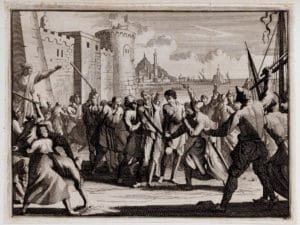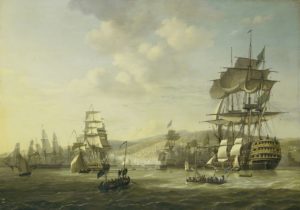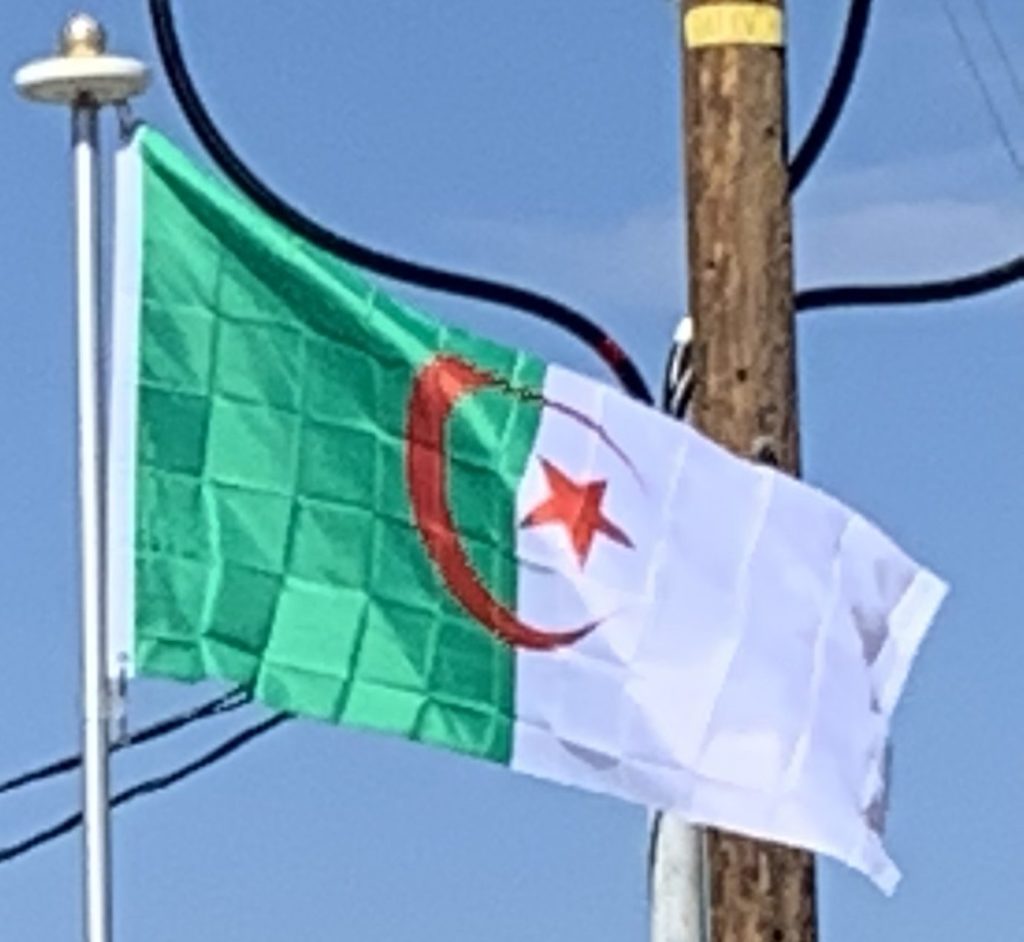The dey was in effect a constitutional autocrat. The dey was elected for a life term, but in the 159 years (1671–1830) that the system survived, fourteen of the twenty-nine deys were assassinated. Despite usurpation, military coups and occasional mob rule, the day-to-day operation of Ottoman government was remarkably orderly. Although the regency patronised the tribal chieftains, it never had the unanimous allegiance of the countryside, where heavy taxation frequently provoked unrest. Autonomous tribal states were tolerated, and the regency’s authority was seldom applied in the Kabylie.
The Barbary pirates preyed on Christian and other non-Islamic shipping in the western Mediterranean Sea. The pirates often took the passengers and crew on the ships and sold them or used them as slaves. They also did a brisk business in ransoming some of the captives. According to Robert Davis, from the 16th to 19th century, pirates captured 1 million to 1.25 million Europeans as slaves. They often made raids, called Razzias, on European coastal towns to capture Christian slaves to sell at slave markets in North Africa and the Ottoman Empire.

In 1544, Hayreddin captured the island of Ischia, taking 4,000 prisoners, and enslaved some 9,000 inhabitants of Lipari, almost the entire population. In 1551, Turgut Reis enslaved the entire population of the Maltese island of Gozo, between 5,000 and 6,000, sending the captives to Libya. In 1554, pirates sacked Vieste in southern Italy and took an estimated 7,000 captives as slaves.
In 1558, Barbary corsairs captured the town of Ciutadella (Minorca), destroyed it, slaughtered the inhabitants and took 3,000 survivors as slaves to Istanbul. Barbary pirates often attacked the Balearic Islands, and in response, the residents built many coastal watchtowers and fortified churches. The threat was so severe that residents abandoned the island of Formentera. Between 1609 and 1616, England lost 466 merchant ships to Barbary pirates.
In July 1627 two pirate ships from Algiers sailed as far as Iceland, raiding and capturing slaves. Two weeks earlier another pirate ship from Salé in Morocco had also raided in Iceland. Some of the slaves brought to Algiers were later ransomed back to Iceland, but some chose to stay in Algeria. In 1629 pirate ships from Algeria raided the Faroe Islands.
Barbary raids in the Mediterranean continued to attack Spanish merchant shipping, and as a result, the Spanish navy bombarded Algiers in 1783 and 1784. In 1792, Spain abandoned Oran, selling it to the Ottoman Empire, and it became the site for a new bey in Algiers, though French influence in the region increased over the 19th century.
In the 19th century, the pirates forged affiliations with Caribbean powers, paying a “licence tax” in exchange for safe harbour of their vessels. One American slave reported that the Algerians had enslaved 130 American seamen in the Mediterranean and Atlantic from 1785 to 1793.

Piracy on American vessels in the Mediterranean resulted in the United States initiating the First (1801–1805) and Second Barbary Wars (1815). Following those wars, Algeria was weaker and Europeans, with an Anglo-Dutch fleet commanded by the British Lord Exmouth, attacked Algiers. After a nine-hour bombardment, they obtained a treaty from the Dey that reaffirmed the conditions imposed by Captain (later Commodore) Stephen Decatur (U.S. Navy) concerning the demands of tributes. In addition, the Dey agreed to end the practice of enslaving Christians.
